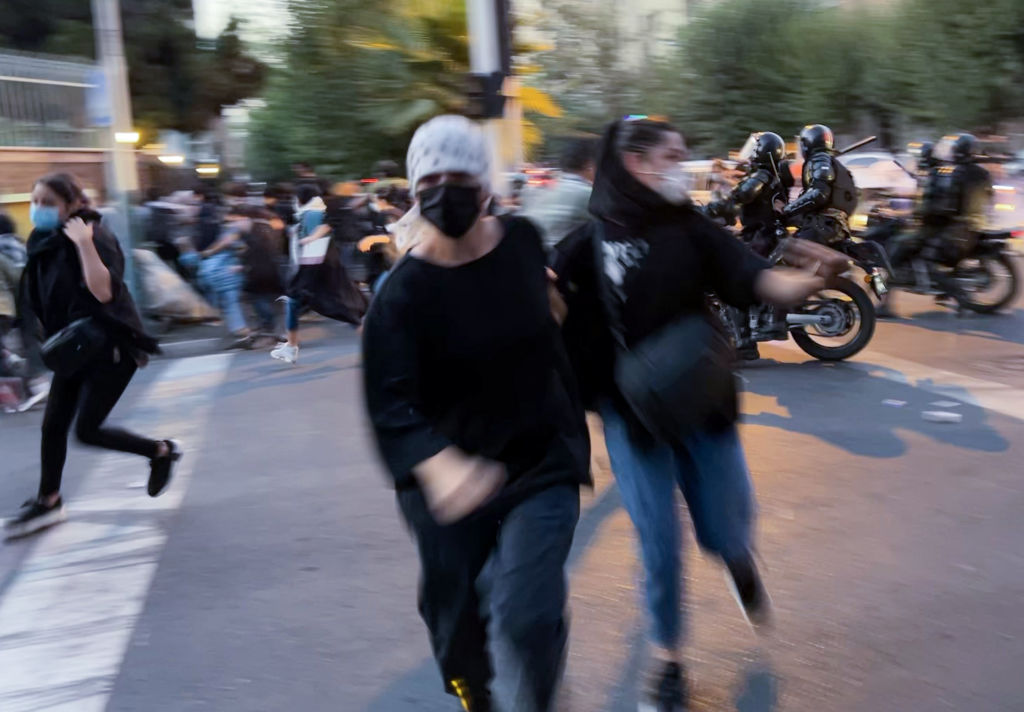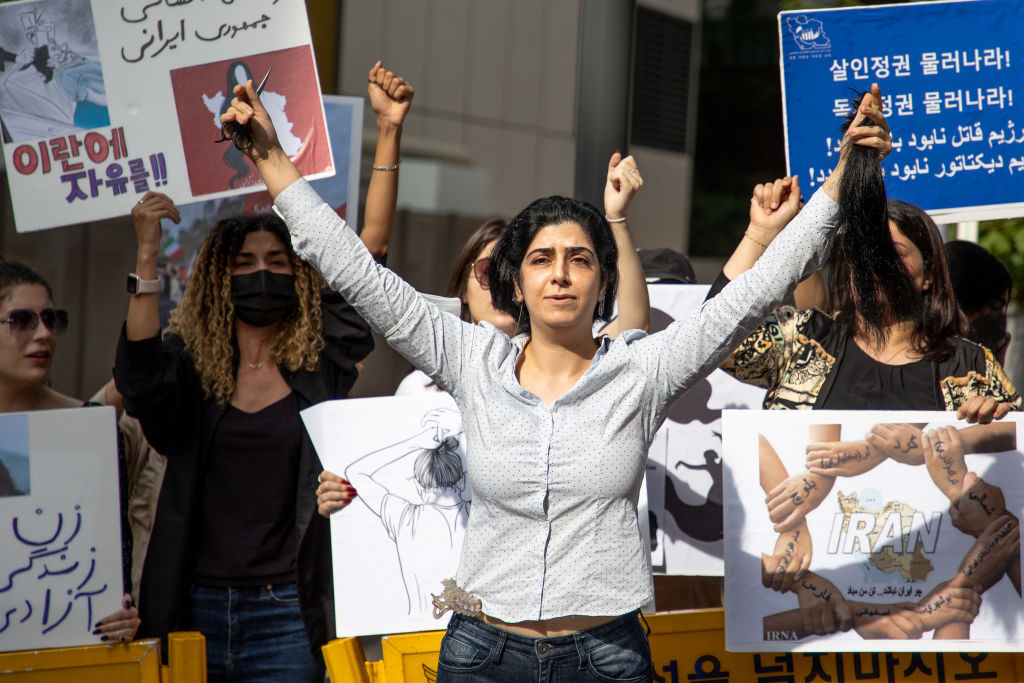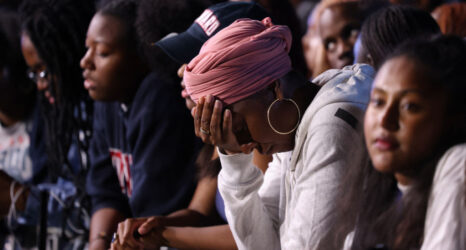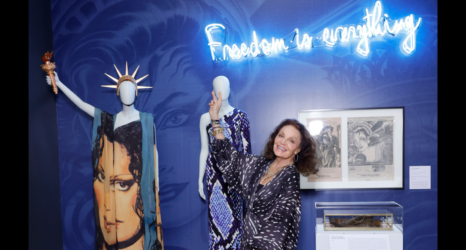
Earlier this month, a few major news outlets, including The New York Times and Time magazine, erroneously reported that the government of the Islamic Republic of Iran had abolished the morality police—the infamous government body in Iran designed to harass and control women for such crimes as wearing an improper hijab or walking in public with a male friend. But it seems the news of its death has been greatly exaggerated.
The Times first reported comments made by Iran Attorney General Mohammad Jafar Montazeri regarding the morality police, formally known as Guidance Patrol. Confusion immediately swirled about the status of Iran’s oppressive morality police. Many in the diaspora took to social media to explain how this was the wrong interpretation of a claim from a singular government official.
Ultimately, early reporting failed to distinguish how utterances from the AG had no authority over this issue—as it’s the decision of the Supreme Leader Ali Khamenei that carry weight.
A quick look at Iran’s constitution concerning the hijab reveals the erroneous interpretation—and how the regulation of women’s appearance is built into the laws and constitution of Iran. According to Article 638 of the Islamic Penal Code, failure to appear without hijab in public is punishable by imprisonment from 10 days to two months or up to 74 lashes. So whether an entity dedicated to enforcing the law—in this case, the morality police—exists, the compulsory hijab is a constitutional mandate.
The Iranian political system is plagued with deep corruption and incompetency. In a system of shifting alliances and constant competition for power, officials often say things that do not mean much. Playing with words and dodging difficult questions are common tactics.
Several months ago, Ensieh Khazali, vice president for women and family affairs of the Raisi administration, made a similar (but ultimately arbitrary) declaration: “Iran doesn’t have morality police.” Faced with criticism, Khazali doubled down, denying its very existence. “Indeed Iran doesn’t have ‘morality police.’ What it has is police-e-amniyat akhlaghi or moral security police.”
Dr. Yalda Hamidi, assistant professor of gender and women’s studies at Minnesota State University, applauds the diaspora’s ongoing effort to raise awareness about the brutality the regime inflicts on its people. She warned that “such false reports send the signal that fights for woman’s fundamental rights are over.” She said she and her friends received congratulatory messages from colleagues who thought the past three months of protests in Iran had come to fruition and the Iranian government had given in to the demands of its people.
“Two beautiful young men have been hanged in the past week,” Hamidi added. “How could the protests be over?” She refers to Mohsen Shekari and Majidreza Rahnavard, both 23 years old, who were arrested for protesting, quickly underwent sham trials without due process and fair legal representation, and were publicly executed for protesting.

Fatemeh Kamali Chirani, a researcher at Hannah Arendt Institute the Dresden University, offers two explanations for the attorney general’s claim.
“First, the announcement was meant to have distracted the world from the government’s deadly crackdowns. If this was indeed the aim, it points to clumsiness and lack of strategy the regime is displaying in the fight against the protestors.
“Second,” she continued, “the fact that a person of little to no significance, such as the AG, has made this claim could mean the political rivalries and internal fractions in the shadow of the current unrests are worsening. … Looking at the scope of the coverage by reputable news sites proves that they did exactly what the Iranian government intended.”
The Morality Police Is One of Many Forces to Police Women
Even if the morality police is dissolved in Iran, Hamidi warned of the Iranian government’s sophisticated tactics of punishing those who dare to break their law.
On Dec, 5, an entire amusement park was shut down when a female employee showed up to work without a headscarf. In another incident, a member of parliament warned of new methods, such as freezing bank accounts of women identified as “bad hijab” or violators of dress codes.
As I write this, my cousin, who lives in a small town, sends me a message via WhatsApp: When driving in the car with her husband, she got a warning via text that her headscarf was not properly covering her hair, including the details of their license plate and location.
Four decades of brutal policing have also given unofficial permission to ordinary citizens whose religious and political ideologies align with the regime to take matters into their own hands. Long before the death of Mahsa Amini ignited the current uprising, a woman could be harassed for her appearances by any passerby merely because the government justifies policing women’s bodies. Videos of citizens arguing or physically confronting each other circulate on social media almost daily.
“Once the government starts embedding its agents in every nook and cranny of society, from banks, workplaces and amusement parks, to every place a woman can enter, those who showed up to support women during the protests will no longer be strong allies in the fight against the regime,” Hamidi said.
Iranian forces attack mourners who gather around the graves of the murdered. They banish the bodies of those who lost their lives under torture to prevent autopsy results from becoming public.
Iran’s morality police are but one of the many forces—from soldiers in anti-riot gear to paramilitia in civilian clothing—the government is using to crush the protests.
Despite two public executions, looming threats against protesters and hundreds of daily arrests, including raiding the homes of celebrities and intellectuals who publicly oppose the government, the protesters continue to show up. The resistance continues. Strikes are taking place in every major industry. University students stage sit-ins, art installations or boycott classes. Eyewitness images and videos on social media capture the extent of unthinkable violence.
The eyes of the world are on Iran. That’s why it’s crucial, Hamidi warned, not to “pay attention to what a single Iranian politician does” but “what people are doing and reporting, despite internet shutdowns and censorship.”
Tune into the latest episode of On the Issues: “Women, Life, Freedom: The Iranian Feminist Revolution (with Dr. Yalda Hamidi and Dr. Parmis Khatibi).” Listen below or head to the episode landing page for a full transcript, background reading and more.
Up next:
U.S. democracy is at a dangerous inflection point—from the demise of abortion rights, to a lack of pay equity and parental leave, to skyrocketing maternal mortality, and attacks on trans health. Left unchecked, these crises will lead to wider gaps in political participation and representation. For 50 years, Ms. has been forging feminist journalism—reporting, rebelling and truth-telling from the front-lines, championing the Equal Rights Amendment, and centering the stories of those most impacted. With all that’s at stake for equality, we are redoubling our commitment for the next 50 years. In turn, we need your help, Support Ms. today with a donation—any amount that is meaningful to you. For as little as $5 each month, you’ll receive the print magazine along with our e-newsletters, action alerts, and invitations to Ms. Studios events and podcasts. We are grateful for your loyalty and ferocity.





